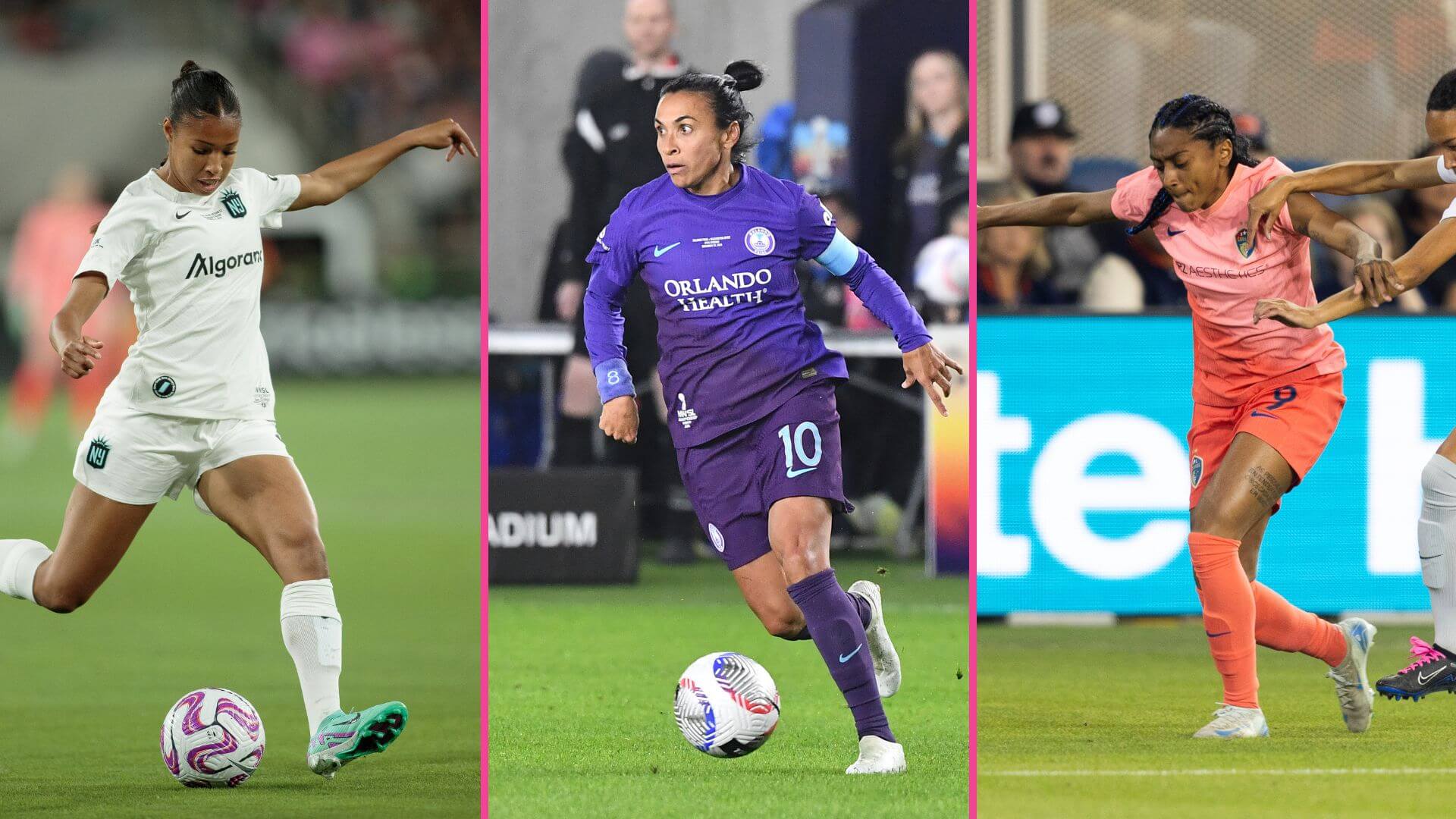VAR in the NWSL: How Will It Affect the League?
The big topic of discussion surrounding the NWSL right now is the integration of video assistant referees or VAR. This is the first season it’s been used in the league, and the NWSL is the first women’s soccer league in the world to utilize the technology. So, what exactly is VAR? And how will it change the league?
What is VAR?
The VAR system is a way to support the match officials already refereeing the game. The actual VAR is a match official who will review plays remotely by using specially installed cameras in the stadium.
The purpose of VAR is to stop clear and obvious errors and missed incidents in the run of play. No referee is perfect, and they can’t see all of the pitch at once, which is how VAR comes into the game. The extra cameras give officials more perspectives of the field to review plays.
All NWSL stadiums now have VAR technology up to FIFA’s standards. In terms of the cameras, we’ll most likely be able to see angles like behind-the-goal cameras, 18-yard-line cameras, goal-line cameras, and more.
How Does VAR Work?
VAR aims to minimize interference in the game while maximizing the benefit. The focus is on four situations:
- Goal or no goal: will review incidents in the run of play leading up to the goal, such as a foul or offsides
- Penalty kick or no penalty kick
- Mistaken identity: when the referee gave the wrong player a yellow or red card
- Direct red card
The VAR automatically reviews every single play and call that falls under these four categories. But it will only get involved if they find that something about the initial call was clearly an error. VAR won’t get involved in the match if the call isn’t clearly and obviously incorrect. In other words, there is a gray area where the VAR doesn’t operate.
Normally, gameplay will resume as the VAR silently communicates with the center referee once a check is complete and no clear and obvious mistake is found.
However, when the VAR reviews a play and determines whether a mistake was made, the gameplay is paused until the check is complete. Once the check is complete, the VAR can advise the center referee and advise for an on-field review–where the center official goes to a screen on the small screen to see the play for themselves, or the center official can ignore the VAR advisement.
The on-field review is generally when the play is more subjective. For example, an on-field review might be used after a penalty was called to determine whether a play in the box warranted a foul.
VAR in Practice
Here’s an example: if a penalty kick were given for a handball inside the box, the VAR would check to see if the penalty was called correctly for a handball inside the box. The VAR needs video evidence of a clear error in the call of the center referee. A camera along the 18-yard box could give the necessary perspective to determine if the handball was, in fact, inside the box. If the VAR checked and the handball was inside the box, the play would continue, and the opposing team would take the penalty kick. But, if the VAR determined the handball was clearly outside the box, they would inform the referee, and they would set up a free kick outside the box where the handball occurred.
Last weekend, we saw an on-field review happen during the Angel City vs. Gotham FC match. Jun Endo found the back of the net, but VAR checked the play and determined that the referee overlooked a clear and obvious foul on Kelley O’Hara by Dani Weatherholt earlier in the run of play. The VAR called the center referee over for review, and the center referee ultimately sided with VAR to call it a no-goal.
VAR makes its first ever decision in #NWSL and it is a controversial one. Jun Endo’s wonder strike is disallowed due to a foul in the buildup. Happens at 5 seconds in this clip. Is this a foul?? ? #LAvNJNY pic.twitter.com/eRhXdRezGN
— The Cooligans (@SoccerCooligans) March 27, 2023
This is another example that happened last season. An Orlando Pride defender appears to trip up Kansas City’s Elyse Bennett inside the box. Ultimately, the referee didn’t call a foul and did not award a penalty kick. The referee may not have had the angle to see the foul or simply made a mistake by not considering the contact a foul. If VAR were implemented here, it would review this as a clear and obvious foul inside the box and call for an on-field review. A penalty kick should have been awarded to the Current in this play.
PK shout from Kansas City.
Bennett definitely gets her foot tangled with the defender.
No VAR in the NWSL (yet). #TealRising #KCvORL pic.twitter.com/fhE2LaYMfS
— Chad Smith (@PlayFor90) August 1, 2022
How Will VAR Affect the NWSL?
Fewer Mistakes
VAR could impact the NWSL in several ways. First, it will aid in getting rid of unfair plays. In previous seasons, the NWSL faced backlash from fans and players about poor officiating. Last season, multiple players were shown red cards for giving referees the middle finger out of frustration.
So, with the addition of VAR and a start of a new season, we’ll hopefully see fairer officiating and fewer headlines about incorrect officiating decisions. In fact, in the Premier League, the implementation of VAR during the 2019/20 season resulted in a rise in accurate match judgments from 82% in the previous season to 94%.
Less Violent Conduct
Additionally, VAR can help limit the number of violent plays. The MLS introduced VAR in 2017. Each season up to the 2022 season saw a severe decline in red cards, violent conduct, and foul play. This is because players know that VAR will automatically review every play. So, it’s near impossible to get away with this type of conduct. The NWSL will likely experience the same change. Players will be less likely to commit egregious fouls or misconduct–like the flipping-the-bird-incidents mentioned above–because VAR will catch it, and the officials will hold them accountable.
Some fans may argue that VAR sucks the fun out of the game or that the time spent reviewing a play disrupts the game. But, the technology is meant to make the game more accurate and, ultimately, safe. Plus, fans can still disagree with the calls of the VAR. It’s simply to give the officials more information and perspective of what’s happening on the field.
Adding VAR to the NWSL means fairer officiating. Plus, it points to deeper investment in the league, which is a great thing. Although VAR is still susceptible to mistakes since there are humans behind the calls, and there will still surely be headlines critical of VAR-reviewed calls, it will undoubtedly lead to vast improvements in officiating and gameplay throughout the season.
Featured image via Getty Images
_
GIRLS SOCCER NETWORK: YOUR SOURCE FOR GIRLS SOCCER NEWS













